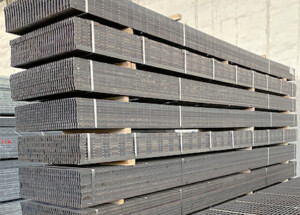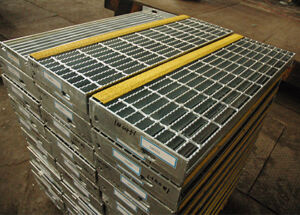Steel grating and architectural grating are both popular choices for various applications. Steel grating is known for its strength and durability, making it ideal for heavy-duty industrial use. On the other hand, architectural grating is designed with aesthetics in mind, making it a great choice for architectural and decorative purposes. In this article, we will compare the two types of grating to help you make an informed decision for your specific needs.
Steel grating is constructed from a series of parallel, elongated bars that are joined together at perpendicular intervals. This design allows for the efficient drainage of water, making it suitable for outdoor use. The high strength-to-weight ratio of steel grating also makes it an excellent choice for platforms, walkways, and stair treads in industrial settings. On the other hand, architectural grating features a more intricate and decorative design, making it a popular choice for interior and exterior architectural applications. It is often used for sunshades, fencing, and building facades to add a touch of elegance to the structure.
When it comes to load-bearing capacity, steel grating is the clear winner. Its robust construction allows it to support heavy loads without compromising its integrity. This makes it an ideal choice for industrial settings where heavy equipment and machinery are present. Architectural grating, while not as strong as steel grating, offers a more visually appealing option for architectural and decorative projects. It can be customized with various patterns and finishes to complement the overall design of the space.
In terms of material options, steel grating is typically available in carbon steel, stainless steel, and aluminum. Each material offers its own set of benefits, such as corrosion resistance and durability. Architectural grating, on the other hand, is commonly made from aluminum due to its lightweight properties and ease of customization. Aluminum architectural grating is often anodized or powder-coated to enhance its appearance and provide additional protection against corrosion.
Installation and maintenance are also important factors to consider when choosing between steel grating and architectural grating. Steel grating requires professional installation due to its heavy weight and complex design. Once installed, it requires minimal maintenance and can withstand harsh environmental conditions. Architectural grating, on the other hand, is lightweight and easier to install, making it a cost-effective option for architectural projects. However, it may require more frequent maintenance to preserve its aesthetic appeal and structural integrity.
When it comes to cost, steel grating is generally more expensive than architectural grating due to its heavy-duty construction and material options. However, the long-term durability and low maintenance requirements of steel grating can result in cost savings over time, especially in industrial applications. Architectural grating, while initially more affordable, may incur higher maintenance costs and may need to be replaced more frequently in high-traffic areas.
In conclusion, the choice between steel grating and architectural grating ultimately depends on the specific requirements of the project. Steel grating is the go-to option for heavy-duty industrial applications that require superior strength and durability. On the other hand, architectural grating offers a more visually appealing and customizable solution for architectural and decorative projects. By understanding the unique characteristics of each type of grating, you can make an informed decision that aligns with your project’s needs and budget.

